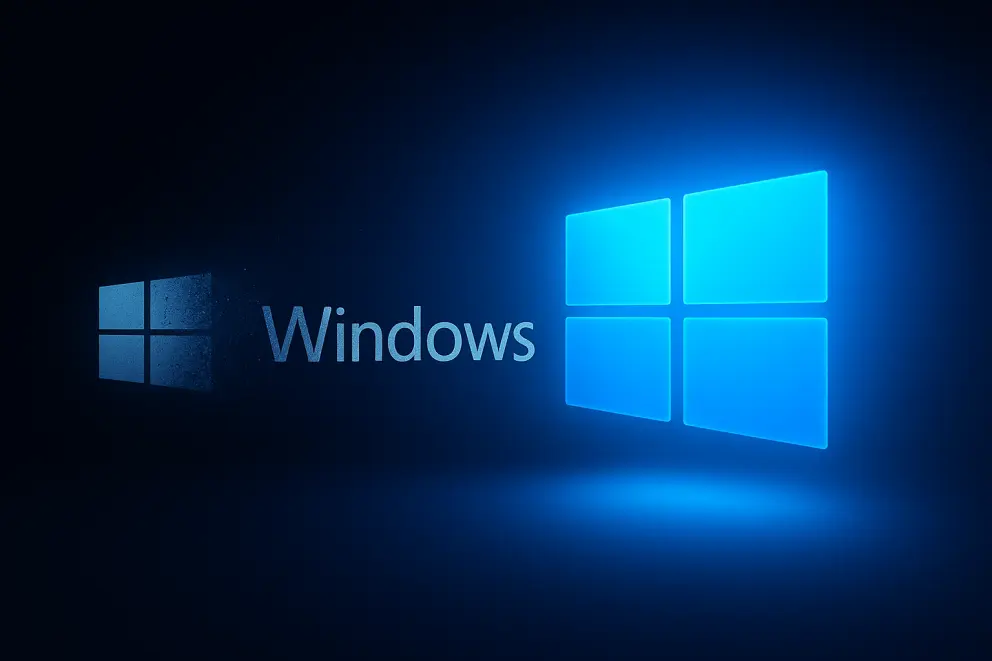Windows 10 Support Ends as Millions Still Use It
Microsoft has officially ended support for Windows 10,
marking the end of an era for one of the most widely used operating systems in
the world. Despite being nearly a decade old, millions of people and
businesses still rely on Windows 10 daily. The decision by Microsoft has
sparked concerns around security risks, upgrade costs, hardware
compatibility, and future software limitations.
Windows 10 was first released in 2015 and quickly became a
global favorite thanks to its balance of performance, stability, and
familiarity compared to the controversial Windows 8. But like every Microsoft
product, it came with a lifecycle—and that cycle has now ended.
When Did Microsoft End Windows 10
Support?
Microsoft confirmed that Windows 10 support ended
officially on October 14, 2025. This means the company will no longer
provide security updates, bug fixes, or technical support for the operating
system. Although some paid support options will continue under Extended
Security Updates (ESU), this is targeted mainly at enterprise users, not
regular home users.
How Many People Still Use Windows
10?
Despite Microsoft pushing users toward Windows 11, the
operating system still has a massive market share. Recent data shows that:
- Over
65% of Windows users are still on Windows 10
- This
means Hundreds of millions of devices globally have not upgraded
yet
- Many
users either can’t upgrade due to hardware limitations or
simply don’t want to upgrade
Windows 11 requires newer processors and TPM 2.0,
making many older but functional PCs ineligible for upgrade. For users who rely
on cost-effective hardware, upgrading isn’t always practical.
What Happens If You Keep Using
Windows 10?
If you decide to continue using Windows 10 even after
support has ended, your computer will still work. However, it comes with
serious risks:
|
Risk
|
Impact
|
|
Security Vulnerabilities
|
No protection against new malware and cyber threats
|
|
Software Incompatibility
|
Future apps and games may not support Windows 10
|
|
Driver Issues
|
Compatibility problems with new hardware
|
|
No Customer Support
|
Microsoft won’t assist with Windows 10 issues
|
Cybersecurity experts warn that unsupported operating
systems become prime targets for hackers. Without security updates, your
personal and financial data could be at risk.
Why Is Microsoft Ending Support
for Windows 10?
There are several reasons behind Microsoft’s decision:
- Push
Users to Windows 11 – Microsoft wants a unified ecosystem.
- Reduce
Maintenance Costs – Maintaining outdated operating systems is
expensive.
- Focus
on AI and Cloud Integration – Windows 11 supports features like Copilot
AI and cloud optimization.
- Improve
Security Standards – Requirements like TPM 2.0 improve data
protection.
Should You Upgrade to Windows 11?
In most cases, yes, upgrading is recommended. Windows
11 offers:
- Better
performance and design
- Enhanced
gaming with DirectStorage and Auto HDR
- Built-in
AI features like Microsoft Copilot
- Improved
multi-tasking tools like Snap Layouts
- Better
security with hardware-level protection
However, Windows 11 isn’t perfect. Some users say:
- Start
menu is less customizable
- Compatibility
issues with older software
- Higher
system requirements limit upgrades
If your PC meets the requirements, upgrading to Windows 11
is the safest long-term solution.
What If Your PC Doesn’t Support
Windows 11?
Don’t worry — you still have options!
Option 1: Stay on Windows 10 (With Caution)
You can continue using Windows 10, but use antivirus,
offline backups, and avoid sensitive banking or shopping activities.
Option 2: Buy a New PC
If your PC is more than 6–8 years old, upgrading hardware
may be the smarter choice. New PCs come with Windows 11 pre-installed.
Option 3: Join Windows 10 Extended Security Updates (ESU)
Businesses can pay yearly for optional security updates
to continue safely using Windows 10. Home users currently cannot officially
join ESU.
Option 4: Switch to Linux
If you want to keep your old hardware, Linux is a
great free alternative. Options like Linux Mint, Ubuntu, or Zorin OS are
perfect for beginners.
How to Check If Your PC Supports
Windows 11
Microsoft offers a tool called PC Health Check.
Here’s how to check compatibility:
- Download
PC Health Check from Microsoft’s website
- Open
the app and click Check now
- It
will tell you if your system can run Windows 11
Minimum System Requirements for
Windows 11:
- 64-bit
processor, 1 GHz or faster
- 4 GB
RAM or more
- 64
GB storage
- TPM
2.0 and Secure Boot support
- DirectX
12 compatible graphics
Is Microsoft Forcing Users to
Upgrade?
Microsoft isn’t forcing users directly—but by ending
security updates, they are strongly encouraging upgrades. Bigger
software companies like Adobe, Google Chrome, and Steam are also
planning to drop Windows 10 support in the coming years. This will make
staying on Windows 10 even harder.
How to Safely Transition from
Windows 10
Before you upgrade or change your OS, follow these steps:
·
Backup your data
·
Note your software license keys
·
Update your PC BIOS if needed
·
Check app compatibility
·
Create a restore point
This ensures you don’t lose data during the upgrade process.
Conclusion
Microsoft’s decision to end Windows 10 support is a
major shift in the tech world. With millions still using the operating
system, this change will impact home users, schools, small businesses, and
large corporations. While the transition may feel inconvenient, upgrading is
important for security, stability, and compatibility.
If your PC supports Windows 11, upgrading is the best
choice. If it doesn’t, consider Linux or upgrading your hardware.
Ignoring the issue and continuing to use Windows 10 without updates could lead
to serious security risks in the future.










